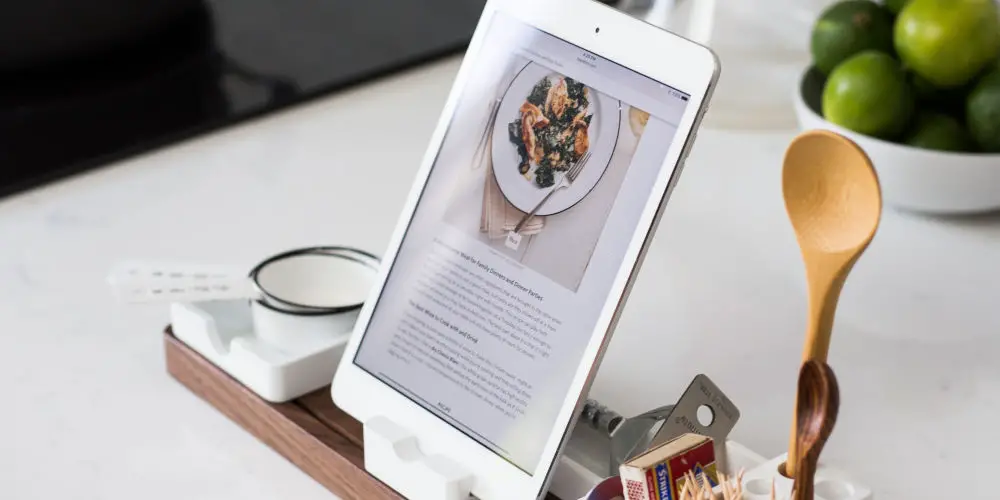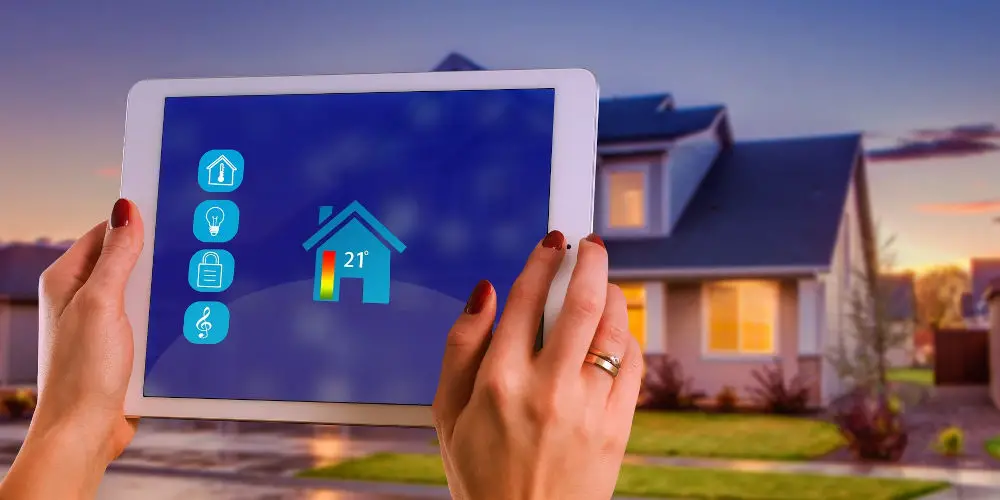Can you leave your smart home tablet plugged in 24/7?

An issue you’ll face soon or later is how to control your smart home system. You could use an app, but you don’t want to be chained to your phone. So, having a tablet in the lounge makes controlling your system easy. But can you leave your smart home tablet plugged in 24/7?
Compared to smartphones, tablets are larger and have stronger batteries that last longer. But they still need charging at some point to keep working. Historically, it was unhealthy for a device to be left charging all the time.
Thankfully, today’s devices have built-in circuit boards that protect them from overcharging, overheating, or voltage spiking. So you can leave a tablet plugged in all the time. Great news if you’re using a tablet to control your DIY home automation system.
Some devices charge faster, some slower. There are countless myths about charging your devices. In this article, we’ll bust some myths about charging tablets, explain how to extend battery life, and you’ll find out the answer to: Can you leave your smart home tablet plugged in 24/7?
Can you leave your smart home tablet plugged in 24/7?
Several myths surround how we charge our devices based on old technology, and some are also total misconceptions.
Overcharging
We often use the term overcharging, which is when you leave a device plugged in for an extended period. It can result in damaging the battery but can also lead to overheating and the device catching fire. These outcomes were common with lithium-ion batteries.
Thankfully, modern tablets are far smarter with managing power, as they gradually reduce the amount of current as the tablet charges up. Advances in battery and charger technologies mean your device will charge after a while even though the charger is still plugged in.
Charging port
However, the situation with a charging port is entirely different. The port and the cable you use are very fragile. So you’ll want to look for ways to reduce the strain on the charging port and keep the cable straight.
If you’re using a tablet for smart home control, we recommend securing it on the wall using a wall mount that protects the port and cable, ensuring a long life.
Should I turn off my tablet when charging?
As you’ll only use your tablet occasionally to adjust your smart devices or activate a scene, you shouldn’t need to turn off your tablet when charging. Some people say that a tablet charges faster when it’s turned off, but that’s not always correct.
How much you use the tablet will affect how quickly the battery drains. However, certain apps are more likely to drain the battery quicker as they constantly refresh and, therefore, use a ton of battery.
Of course, if you uninstall all the unessential apps, tweak the basic settings, and only add your smart home system’s app, you’ll find the battery lasts far longer. Doing so limits how useful your tablet is outside using as a controller, but that is the aim of using one.
Thankfully, new tablets have high battery savings algorithms while on standby. So, turning your tablet off when charging won’t make any difference. It’s fine to leave your tablets on all the time because they’re designed this way.
We’ve touched on overheating. Lithium-ion batteries aren’t fans of high temperatures, and people say their tablets are hot when charging. However, if you aren’t using your tablet, it’s highly unlikely it will reach a critical temperature.
Another thing to consider is if you turn off your tablet when charging you will not receive important notifications. You might miss a notification alerting you that someone is at the front door or a light failed to turn on when scheduled too.
So, it’s perfectly fine to leave your tablet on and control your smart device and scenes with ease and without causing any issues.

Can you overcharge a tablet?
Many devices now use fast charging technology. So, you don’t need to charge your tablet for a long time, yet many people leave their devices to charge overnight. Old habits die hard!
In the past, batteries of mobile phones and tablets were not smart enough to detect when they were fully charged. And so, they didn’t cut off the power supply.
Thankfully, with newer technology involved, modern batteries don’t have overcharging issues anymore. Today tablets have digital circuit breakers. That means that the charging is cut off when the device detects that the battery is at capacity.
So, you can leave your tablet plugged in even though it’s fully charged without harming it. It will only charge until it’s 100% and then stop drawing current.
What about charge cycles?
Another thing to be aware of is charge cycles. In past, we were told to let a device drain its battery and charge it from zero. However, that’s not the case anymore. Today’s batteries are mostly lithium-ion. Lithium-ion contains a limited number of charge cycles.
Instead of letting your tablet’s battery go completely dead before charging it, top it off with a few small charges.
The most recommended charge for the longevity of lithium-ion batteries is plugging the device at about 40% battery capacity and charging it up to 80% at least.
Should you use your tablet while charging?
Using the table while it’s plugged in doesn’t hurt the battery, but it’s not the most ideal situation. Batteries don’t like heat. The ideal temperature is around 25 degrees Celsius.
Both charging and using the tablet may cause the battery to warm up, a situation you want to avoid. When using the tablet while charging, try to avoid opening applications that use a lot of power, as this can cause your tablet to heat up.
Again, as we recommend only using the tablet for controlling your smart home system, you can delete most of the other apps and ensure it operates at a fast speed.
While a high-temperature environment will not make your tablet’s battery explode, it can diminish the battery’s lifespan. You will damage the battery if exposed to heat for a longer period of time.

How do I ensure my tablet battery lasts longer?
The average lifespan of a lithium-ion battery is two years. Of course, as you’ll occasionally use the tablet, the battery should last far longer than this. That said, you’ll probably want to update it after a few years, as the latest technology will be faster and better.
Turn down the brightness
The display is one of the best features of a tablet, but it uses a lot of power to light up. Turning down your brightness even a little bit can prolong your battery life.
Delete apps you don’t need
While it might be nice to have Facebook, some card games, and YouTube installed on your tablet, that’s not the purpose of having one. So you’ll want to delete most of the pre-installed apps and only add ones to control your smart home devices.
Disable notifications
Even if you only have a few apps, you could end up drowning in notifications. Some might be useful, but the majority aren’t. So, disable the notification of apps you don’t need.
Close unneeded apps
Apps are always running in the background and they can silently drain your battery. So, it’s worth closing all apps you’re not using to maximise battery life.
Disable unwanted connections
Your tablet uses several connectivity options, such as Bluetooth, Wi-Fi, and LTE. These connectivity options each use resources and power. Many will constantly search for ways to connect to various services, draining the battery in the process. So, it’s worth disabling them.
Using a tablet to control your smart home system
You now can answer: Can you leave your smart home tablet plugged in 24/7? Also, you have some tips to ensure your tablet lasts for years without exploding or warping.
Adding a tablet to your smart home system is a great way to control it without needing a smartphone or having to remember a complicated list of settings. As with voice assistants, having a tablet won’t replace other options but will give you more flexibility to use the system as you want it.




